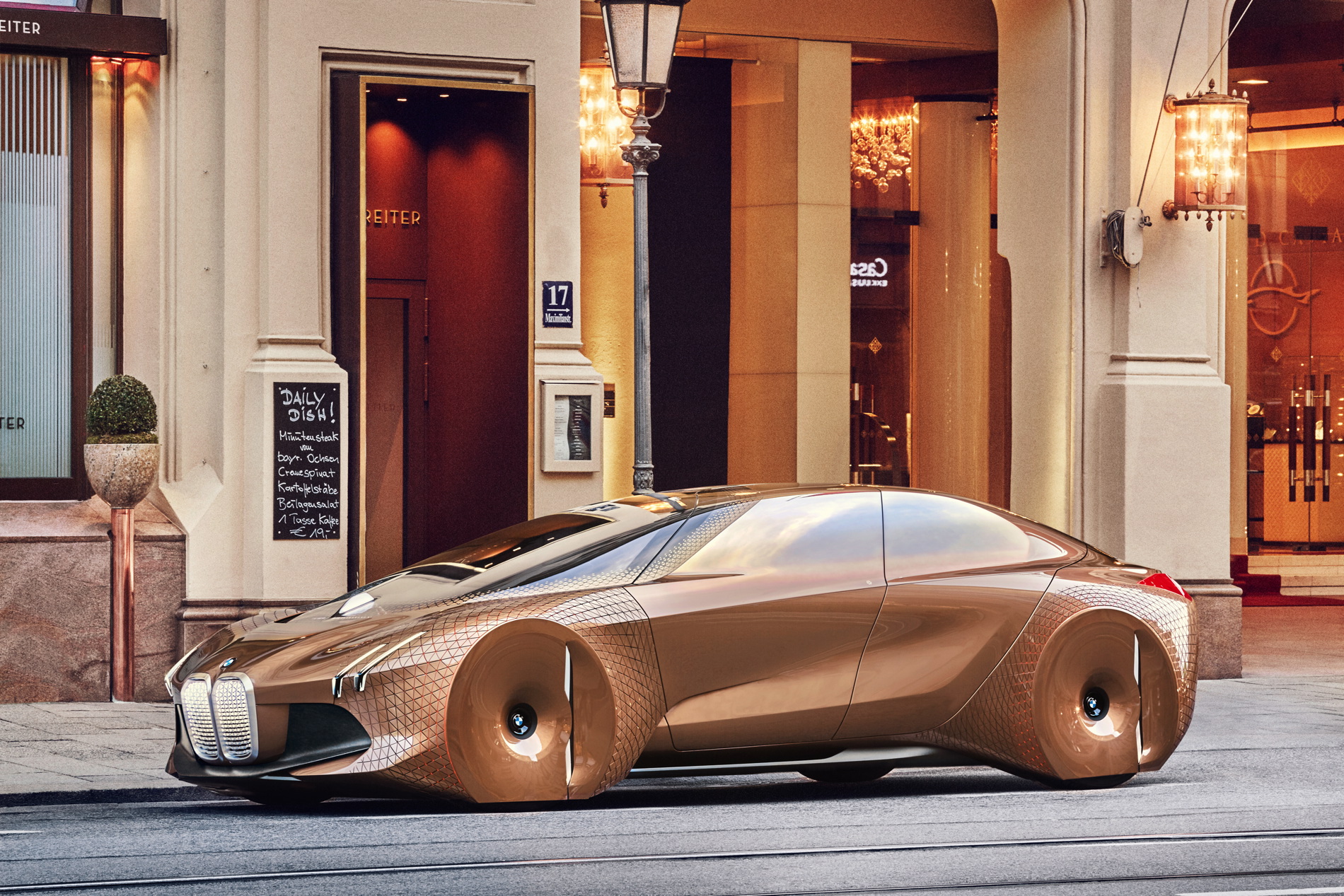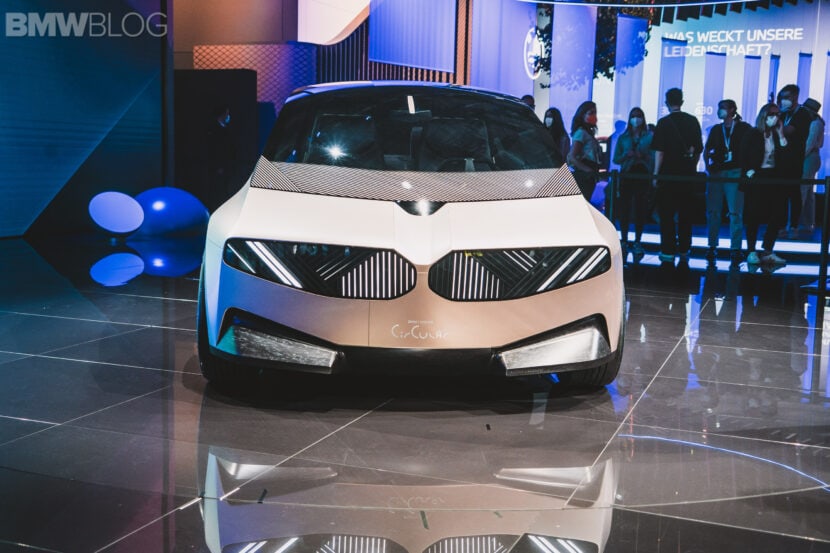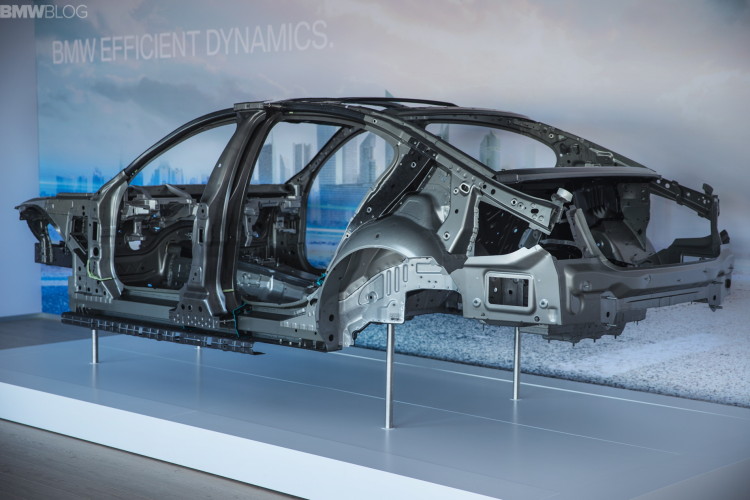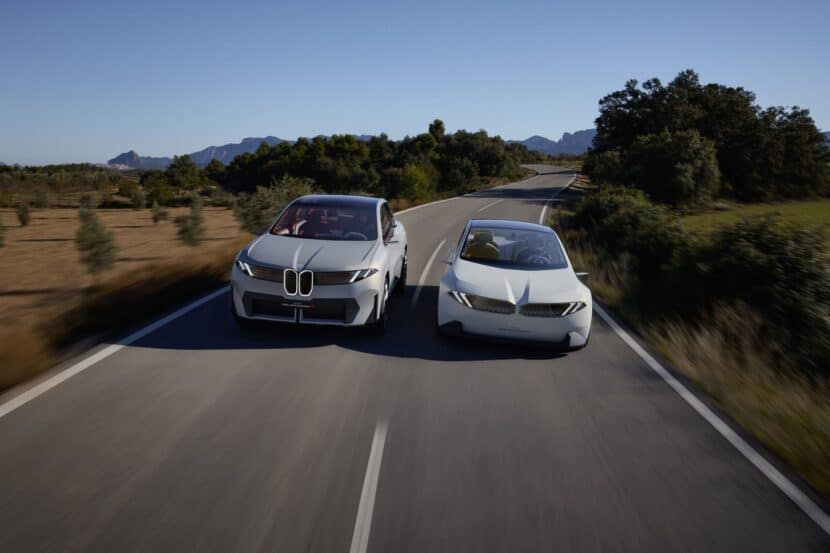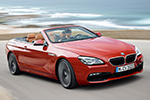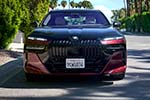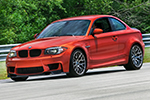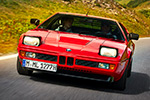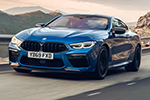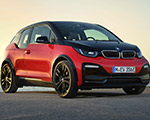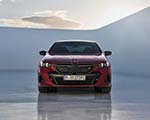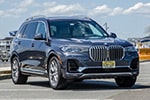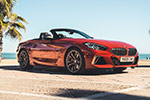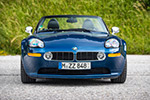In 2016 BMW built the ‘Vision 100’ concept which offered us a glimpse of things to come. The ‘Vision 100’, built to celebrate BMW’s centenary, explored BMW’s vision of driving in a changing world. It was a waypoint towards the future, one where driving could still be a passion in an age when self-driving cars would become common. BMW emphasized the principles of Electrification, Digitalization, and Circularity with the ‘Vision 100’.
Electrification, Digitalization, and Circularity Defined
While electrification should be self-explanatory, digitalization encompasses vehicle control, the user interface, and importantly, the user experience. Circularity can be described as a conscious attempt to, where possible, rethink, reduce, recycle, and reuse materials and resources. BMW then built further concepts to demonstrate these principles which paved the way for the ‘Vision Neue Klasse’. While electrification was at the heart of all of the concepts, the BMW i Vision Circular demonstrated the circularity principle while the i Vision Dee demonstrated the digitalization, especially from the user’s perspective.
BMW’s foundation is motors, specifically engines – the basis for the company’s origin and the pride of its engineers and workforce. What happens in an all-electric world, how can BMW respond and remain relevant and true to its past? And how does ‘Freude am Fahren’ translate in a world full of self-driving vehicles? The key, BMW believes, will be in the experience, not merely the technology. This article will explore technical features – at a high level, but BMW wants to define a driving experience – an emotional experience, and, have no fear, the act of driving will still be a large part of the BMW ‘Neue Klasse’ experience.
From i3 to CLAR: The Platform Learning Curve
BMW learned valuable lessons from the production of the i3, including how to develop and manufacture electric vehicles. In addition they gained valuable insights into the advantages of electric vehicles as well as their constraints. BMW then made the decision, in the 2010s, to produce ICE, hybrid, and all-electric vehicles on the CLAR architecture. This made sense given the uncertain future of the market for all-electric vehicles and that electric vehicle technology was still evolving.
Performance electric cars, however, exposed the existing car control technology’s limitations. This was observed while going wide open throttle on a BMW i4 M50 from 5 mph. It was entertaining but not quite as refined as it should be. The torque tugs at the steering wheel, not unlike the Saab 9-3 Viggen used to. The electric motor’s instantaneous torque, as opposed to a gas engine’s transitional buildup of torque, pushes the limits of the vehicle’s control software. A new approach to vehicle control was needed for all-electric vehicles, especially if they were intended to be performance cars.
Tesla’s solution to all-electric driving is the benchmark and their System-on-Chip (SoC) is used in their electric and fully self-driving capable vehicles. The SoC implements a real time operating system (RTOS) that utilizes a neural processing unit (NPU), and a graphical processing unit (GPU), and often a redundant pair of central processing units (CPU), along with a high bandwidth memory bus and shared memory regions between the processors. The CPUs are used to control the vehicle, the NPU evaluates the vehicle’s sensor data, and the GPU may be used to assist with perception tasks and also present data to the driver and passengers.
Introducing the Heart of Joy: BMW’s Custom Vehicle Brain
This is exactly what BMW’s ‘Heart of Joy’ ECU will do. The ‘Heart of Joy’ is a dense integrated system on a chip that utilizes a higher bandwidth data bus architecture than the current architecture, ten times the throughput in fact. It is the bandwidth of the bus – how many bits of information it can carry – as well as bus length that determines how quickly the vehicle can respond to inputs.
BMW will utilize a custom in-house RTOS that takes advantage of the ‘Heart of Joy’ control unit’s capabilities. It is optimized to reduce latency, reacting to interrupts virtually immediately. It also ekes out every possible energy savings, gaining further efficiency than an off-the-shelf RTOS could provide. BMW’s RTOS brings the ‘Heart of Joy’ to life.
While the ‘Heart of Joy’ acts on driving dynamics, three other high bandwidth processors deal with automated driving; infotainment; and climate, lighting, and vehicle access. The ‘Heart of Joy’ will synchronize drivetrain, braking, steering, and energy recuperation with the processing scale and bandwidth to securely tame the torque tiger.
The ‘Heart of Joy’ has shown off its ability to manage high powered electric vehicles with BMW’s Vision Driving Experience (VDX), which offers a peek at future M all-electric vehicles. The ‘Heart of Joy’ system manages the over 13,000 lb-ft of torque available at the VDX wheels seamlessly.
To manage the diverse electrical subsystems in the car, BMW divides the ‘Neue Klasse’ into four electrical zones, front, center, rear, and roof. BMW uses smart eFuses to monitor voltage, current, and/or temperature for devices that are within a zone and are able, using firmware embedded in them, to communicate through a data bus specific to the zone. Alerts are then sent on to the ‘Heart of Joy’. The eFuses afford better protection to critical circuits and reduce weight. They use field-effect transistors to interrupt power delivery to a faulty module, rather than a traditional fuse’s slow sacrificial failure, or bulky relays. Power is delivered to vehicle modules, like lights, radio, heater controls, from a common power bus then through an eFuse; this is one area where vehicle wiring weight reduction occurs.
The Power of 800 Volts: Lighter, Faster, More Efficient
BMW will also use an 800 volt electrical architecture for the powertrain. This brings a number of benefits like the ability to utilize higher performance motors, to reduce cooling requirements, provide faster charging, and reduce weight. Higher voltage means less current is required to produce power which allows for a reduction in wire diameter and, subsequently, weight.
BMW’s latest generation of electrification – Gen6 – will use electrically excited synchronous motors (EESM) for RWD and on the rear axle on AWD vehicles. For potential FWD and AWD the cars will use asynchronous motors (ASM) at the front. Energy losses are reduced by 40%, weight by 10%, and production costs are lowered by 20% compared to Gen5 tech. Here is the ‘Circularity’ principle in action. This will increase range and reduce charging times. The motors will be able to provide a driving experience from mild to wild, with the potential for over 1,300 HP in a future M model.
BMW will also use cylindrical battery cells in Gen6 electrification. They can be used without the need for a separate container, unlike the current prismatic battery cells. This reduces weight and can deliver space savings. The new batteries have a greater energy density, over 20%, than the current generation of batteries. This translates to extended range. Utilizing the 800v architecture, charging time will be reduced. The batteries use recycled lithium, cobalt, and nickel. The cost to manufacture the new batteries is subsequently up to 50% less than the old batteries. The very shape of the cylindrical batteries provide superior thermal management when compared to prismatic cells. This reduces the risk of ‘thermal runaway’ compared to the previous generation batteries.
This new Gen6 architecture will, of course, be controlled by the ‘Heart of Joy’, promising outstanding vehicle dynamics. The driver’s input on steering, braking, acceleration will feel crisp given the high processing bandwidth employed. The driver will see information displayed on a panoramic heads-up display projected onto the base of the windshield. It will be customizable and is meant to be as intuitive as possible. The idea is to use technology to assist rather than resist the driver. The panoramic display is in keeping with BMW’s slogan, “Eyes on the road, hands on the wheel”.
Design Reimagined: Retro Cues With a Futuristic Edge
The styling of the ‘Neue Klasse’ is a return to its roots for BMW. It is meant to be an emotional tug towards the familiar and comfortable. The wheels are exceptionally well done. Motion shots of the car show nifty styling and BMW has managed to maintain the ‘five spokes’ look while static. The headlamps/grille and tail lamps of the Vision Neue Klasse’ are stunning – the 3D effect is good from almost every angle. While it doesn’t need a grille it is good that it is there, the equivalent Tesla front fascia, without a grille, is boring. The integration of the rear spoiler into the tail lamps is clever. The upper accent line on the sides of the car, that provides a horizontal reference front to rear, appears to be part of the window – it will be interesting to see how that makes it into production.
Incorporating the Hofmeister Kink in the door panel was very clever. One is really impressed with the angularity of the design, sharp creases and muscular wheel arches. Looking at the design and drawing on memory of small sedan designs of the past, it would appear that Italian influences are present as well as Paul Braq’s E12. Regardless, this could well be a classic.
From the ‘Vision 100’ concept to the ‘Neue Klasse’, BMW has shown what it believes the future of ‘Joy of Driving’ will be. Here’s to the next 100 years.


